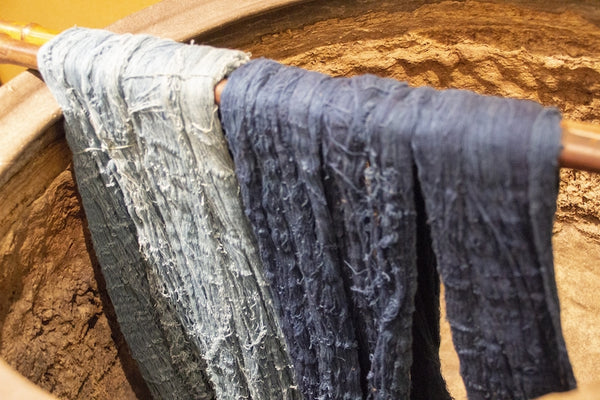custom natural dye indigo
The Art of Custom Natural Dye Exploring Indigo's Rich Heritage
Natural dyes have long been an essential part of human history, and among them, indigo stands out as a symbol of both cultural significance and artistic expression. The custom dyeing process using indigo has become increasingly popular in recent years, not just for its vibrant hue, but also for its sustainable and environmentally friendly attributes. In this article, we will delve into the rich heritage of indigo as a natural dye, its applications in modern textiles, and the revival of artisan techniques that celebrate this age-old craft.
The Indigo Plant and Its Historical Significance
Indigo dye is derived from the leaves of the indigofera plant, which has been cultivated for thousands of years across various cultures. The use of indigo as a dye can be traced back to ancient civilizations in places like Egypt, India, and China. In fact, indigo was so valuable that it was sometimes referred to as blue gold. This potent dye has not only colored fabrics but has also served as an economic powerhouse, driving trade routes and influencing social dynamics in many regions.
In India, for example, the production of indigo dye has deep cultural roots. It was historically tied to the caste system, where specific communities were responsible for its cultivation and processing. The indigo movement also played a significant role in India's independence struggle, as local farmers fought against colonial exploitation of this precious crop. Today, the artisan community continues to embrace these traditions, focusing on ethical practices that promote sustainability and fair trade.
The Process of Dyeing with Indigo
The custom dyeing process involving indigo requires a unique set of skills and knowledge. Unlike many synthetic dyes, indigo undergoes a fascinating fermentation process. The leaves must be harvested and then fermented in water, creating a liquid called indigo vat. Once the fabric is submerged in this vat, it reacts with oxygen to produce a beautiful blue hue. This dyeing process requires multiple dips to achieve the desired shade, with each layer of dye adding to the depth and richness of the color.
The striking feature of indigo is that it appears green when first pulled from the vat, gradually transforming into a deep blue as it oxidizes. This delightful transformation captivates artisans and users alike, making every piece dyed with indigo truly unique. The mastery involved in this craft has prompted a resurgence of interest in natural dyeing workshops, where participants can learn the intricacies of working with this exceptional color.
custom natural dye indigo

Sustainability and Environmental Impact
As the fashion industry increasingly recognizes the importance of sustainability, natural dyes, particularly indigo, have emerged as a compelling alternative to synthetic dyes. Many synthetic dyes involve harmful chemicals that can adversely impact the environment and health of workers. In contrast, indigo is non-toxic and biodegradable, making it an eco-friendly option.
Furthermore, growing and processing indigo can support biodiversity, as it often incorporates traditional farming methods that utilize crop rotation and intercropping. Many artisans are committed to preserving these practices, which not only sustain their livelihoods but also contribute to preserving cultural heritage.
Reviving Artisan Techniques
The resurgence of interest in custom natural dyeing with indigo has sparked a creative renaissance among artisans worldwide. Many now embrace traditional techniques while integrating contemporary designs, allowing for a fusion of old and new. This revival encourages younger generations to engage with their cultural roots while promoting an appreciation for handmade, one-of-a-kind textiles.
Artisans are also contributing to a growing community of like-minded individuals who champion the slow fashion movement. By prioritizing quality and craftsmanship over mass production, these creators are redefining the fashion landscape. Custom indigo-dyed products are often characterized by unique patterns and imperfections, elevating them from mere clothing to wearable art.
Conclusion
Indigo, with its historical depth and cultural significance, continues to enchant those who participate in the art of natural dyeing. By choosing to engage with indigo dye as a custom natural dye option, individuals not only support sustainable practices but also celebrate a rich heritage that transcends borders. As more people appreciate the beauty of indigo and the artistry behind it, the revival of these techniques promises to keep the tradition alive for generations to come. The journey of dyeing with indigo is not just about creating color; it’s about weaving stories, preserving culture, and nurturing the environment, one vibrant shade at a time.
-
The Timeless Art of Denim Indigo Dye
NewsJul.01,2025
-
The Rise of Sulfur Dyed Denim
NewsJul.01,2025
-
The Rich Revival of the Best Indigo Dye
NewsJul.01,2025
-
The Enduring Strength of Sulphur Black
NewsJul.01,2025
-
The Ancient Art of Chinese Indigo Dye
NewsJul.01,2025
-
Industry Power of Indigo
NewsJul.01,2025
-
Black Sulfur is Leading the Next Wave
NewsJul.01,2025

Sulphur Black
1.Name: sulphur black; Sulfur Black; Sulphur Black 1;
2.Structure formula:
3.Molecule formula: C6H4N2O5
4.CAS No.: 1326-82-5
5.HS code: 32041911
6.Product specification:Appearance:black phosphorus flakes; black liquid

Bromo Indigo; Vat Bromo-Indigo; C.I.Vat Blue 5
1.Name: Bromo indigo; Vat bromo-indigo; C.I.Vat blue 5;
2.Structure formula:
3.Molecule formula: C16H6Br4N2O2
4.CAS No.: 2475-31-2
5.HS code: 3204151000 6.Major usage and instruction: Be mainly used to dye cotton fabrics.

Indigo Blue Vat Blue
1.Name: indigo blue,vat blue 1,
2.Structure formula:
3.Molecule formula: C16H10N2O2
4.. CAS No.: 482-89-3
5.Molecule weight: 262.62
6.HS code: 3204151000
7.Major usage and instruction: Be mainly used to dye cotton fabrics.

